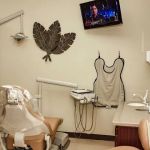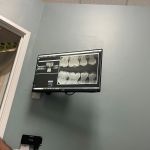Symptoms of Gum Recession and How to Treat It
- 1. Symptoms of Gum Recession
- 2. Causes of Gum Recession
- 3. How to Treat Gum Recession
- 4. Prevention of Gum Recession
- 5. Products for Gum Recession Treatment
1. Symptoms of Gum Recession
Gum recession is a common dental issue that often goes unnoticed in its early stages. The primary symptoms include visible tooth roots, longer-looking teeth, and increased sensitivity to hot or cold foods. People may also experience bleeding gums or gum pain during brushing. As the gums recede, it can expose the tooth roots, leading to a higher risk of cavities and infection.
2. Causes of Gum Recession
Gum recession can occur due to several factors. Poor oral hygiene is one of the most common causes, leading to plaque buildup and inflammation. Other causes include genetic predisposition, hormonal changes, tobacco use, and aggressive brushing. Additionally, age-related wear and tear on the gums can contribute to the recession.
3. How to Treat Gum Recession
While gum recession cannot be completely reversed, there are various ways to manage and treat the condition. Treatment options include non-surgical methods like scaling and root planing to remove plaque and tartar. For more severe cases, gum grafts may be considered to restore lost gum tissue. Maintaining good oral hygiene and using a soft-bristled toothbrush can prevent further gum recession.
4. Prevention of Gum Recession
Preventing gum recession is possible through proper oral care. Brushing twice a day with fluoride toothpaste, flossing daily, and visiting your dentist regularly for check-ups are key practices. Avoiding smoking and using a soft-bristled toothbrush can also help protect your gums. Moreover, addressing any misalignment issues through orthodontic treatments can help reduce the risk of gum recession.
5. Products for Gum Recession Treatment
If you’re experiencing gum recession, there are various products designed to aid in treatment. Special toothpaste for sensitive teeth, antimicrobial mouth rinses, and gum rejuvenating gels can be beneficial. Additionally, professional treatments like laser therapy and gum grafting procedures are available at dental clinics. To explore more treatment options, visit Dentistry Toothtruth for expert recommendations on gum recession treatments.







 Dr. Kenneth J. Kalil0.0 (0 review)
Dr. Kenneth J. Kalil0.0 (0 review) Access Dental Group Manhattan PLLC3.0 (18 review)
Access Dental Group Manhattan PLLC3.0 (18 review) Jewel Dental Schaumburg5.0 (47 review)
Jewel Dental Schaumburg5.0 (47 review) White Smiles Family Dental4.0 (74 review)
White Smiles Family Dental4.0 (74 review) Assure Dental of Colton4.0 (290 review)
Assure Dental of Colton4.0 (290 review) New Roc Dental: Ovral Wynter, DDS4.0 (138 review)
New Roc Dental: Ovral Wynter, DDS4.0 (138 review) The Importance of Oral Health Education During Pregnancy for a Healthy Pregnancy
The Importance of Oral Health Education During Pregnancy for a Healthy Pregnancy Best Tips for Brushing Your Teeth Properly for Healthy Gums: Essential Techniques for Oral Health
Best Tips for Brushing Your Teeth Properly for Healthy Gums: Essential Techniques for Oral Health Why Skipping Dental Checkups Can Lead to Bigger Oral Health Problems
Why Skipping Dental Checkups Can Lead to Bigger Oral Health Problems Advantages of Porcelain Dental Restorations
Advantages of Porcelain Dental Restorations How Can Diabetes Cause Tooth and Gum Problems? Preventing and Managing Oral Health Issues
How Can Diabetes Cause Tooth and Gum Problems? Preventing and Managing Oral Health Issues Healthy Habits for Promoting Good Oral Health and Hygiene: Tips for a Healthy Smile
Healthy Habits for Promoting Good Oral Health and Hygiene: Tips for a Healthy Smile